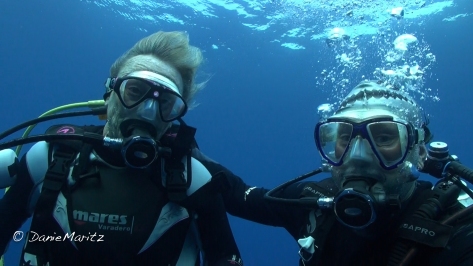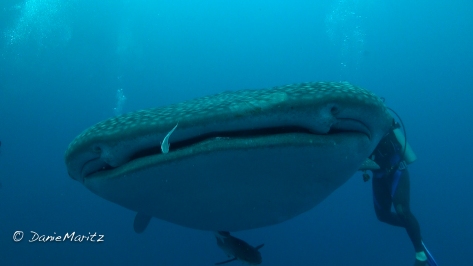Diving with the Whale sharks in Cenderawasih Bay is probably one of the best WhaleShark experiences on this planet. It is important to do it from a good liveaboard vessel, because of the remoteness of the area. The MSY Seahorse is probably an obvious best choice.
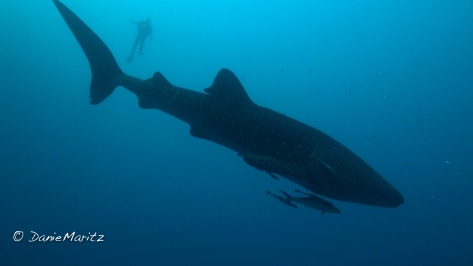
Cenderawasih’s marine diversity has earned it the name of “The Galapagos of Indonesia’s reefs” by Dr Gerald Allen.
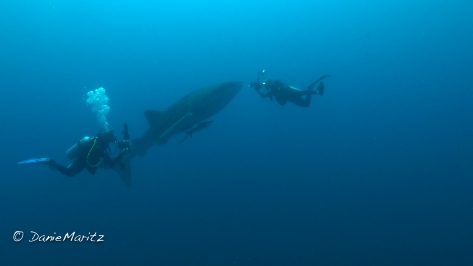
We flew to Biak, from Jakarta via Sulawesi, where we boarded our liveaboard ship, which would be home for the next 10 days, the MSY SeaHorse. It is a 33 meter Pinisi rigged Sulawesi schooner and can accommodate up to 16 guests. The captain, crew and dive masters were very friendly, polite and helpful. The ships layout is especially suitable to accommodate underwater photographers.
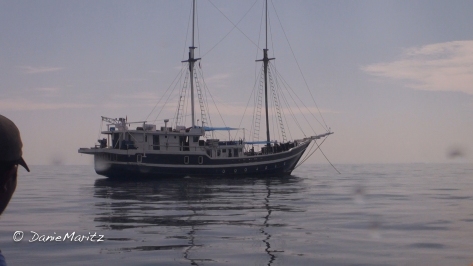
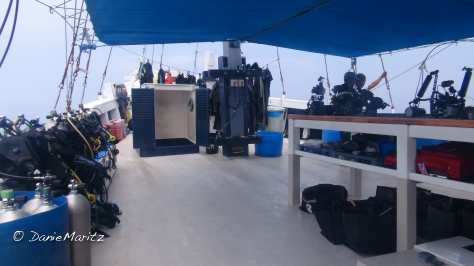
Biak is a small island located on the northern border of Cenderawasih Bay. Biak is the largest island in its small archipelago, and has many atolls, reefs and corals. Their language is Indonesian and the main local language is Biak. Languages such as Dutch and English are also used, but limited.
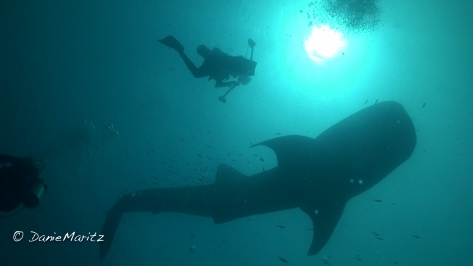
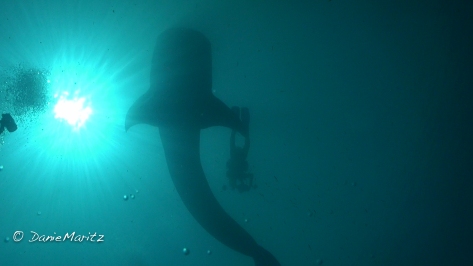
It was not until 1828 when the first whale shark specimen known to science was discovered off the South African coast. Dr Andrew Smith formally described this species later that year as the largest living shark in the ocean.
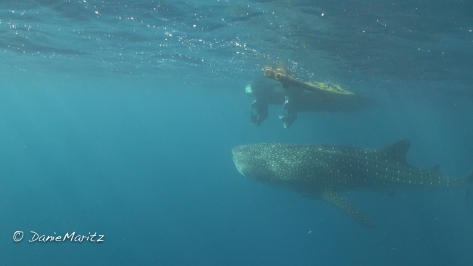
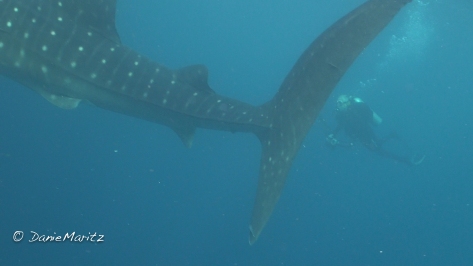
There is a pattern of lines and spots on the skin of each shark which enables them to ‘blend’ into their surroundings. This ‘camouflage’ makes the sharks less conspicuous in their oceanic environment. The unique patterning does not appear to change over time and can be used to identify individual sharks.
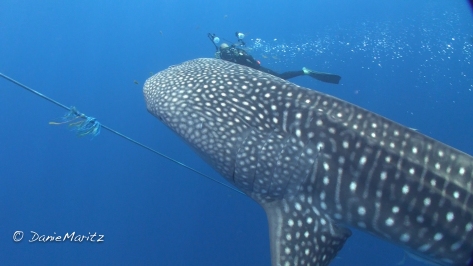
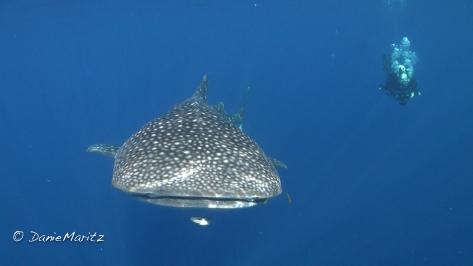
The largest confirmed individual had a length of 12.65 m and a weight of more than 21 metric tons.
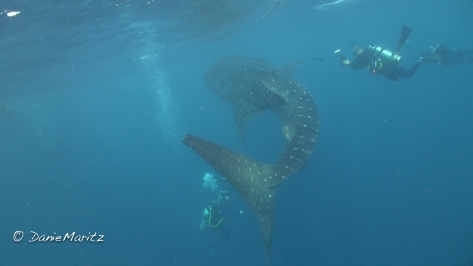
The name “whale shark” comes from the fish’s size, being as large as some species of whales and also a filter feeder like baleen whales.
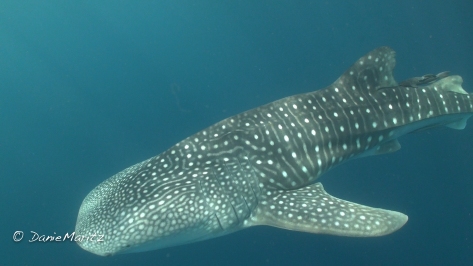
Whale sharks have five large pairs of gills. The head is wide and flat with two small eyes at the front. Whale sharks are grey with a white belly. Their skin is marked with pale yellow spots and stripes which are unique to each individual, almost like the Australian Aboriginal dot paintings.
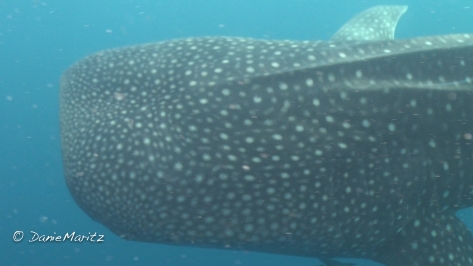
The whale shark has three prominent ridges along its sides. Its skin can be up to 10 cm thick. The shark has a pair of dorsal and pectoral fins. Juveniles’ tails have a larger upper fin than lower fin, while the adult tail becomes semilunate.

It is the sole member of the genus Rhincodon. The species originated about 60 million years ago.
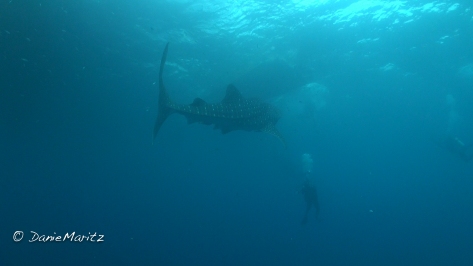
Whale sharks have a mouth that can be 1.5 m wide, containing 300 to 350 rows of tiny teeth and 10 filter pads which it uses to filter feed.
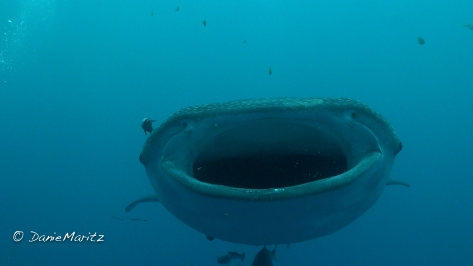
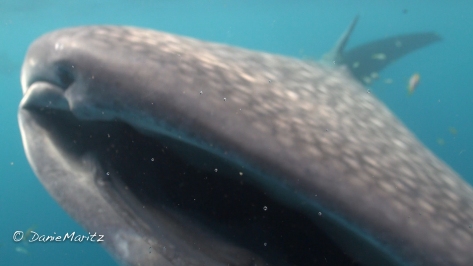
The whale shark is a filter feeder. One of only three known filter feeding shark species. The other are the basking shark and the megamouth shark. It feeds on macro-algae, plankton, krill and small fish.
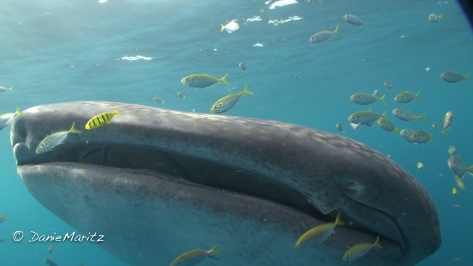
Divers are normally told not to approach the whale sharks and keep your distance, so as not to scare them. Here in Cenderawasih you’ll have to swim to try and AVOID the sharks from bumping into you.
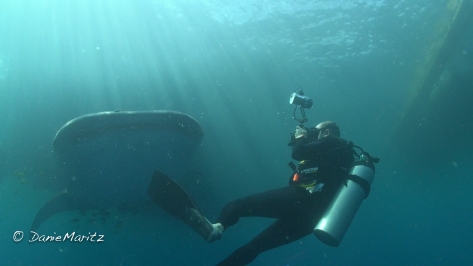
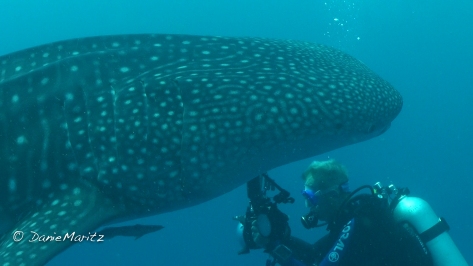
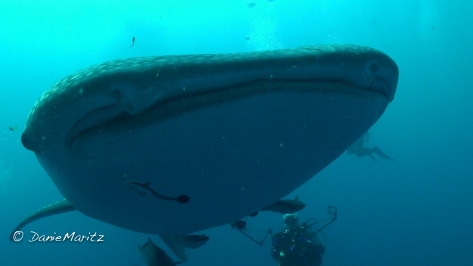
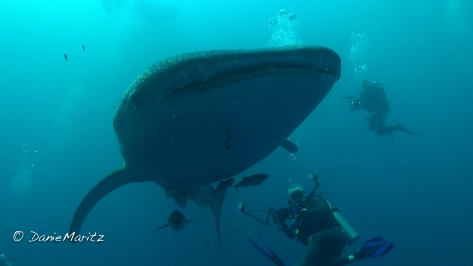
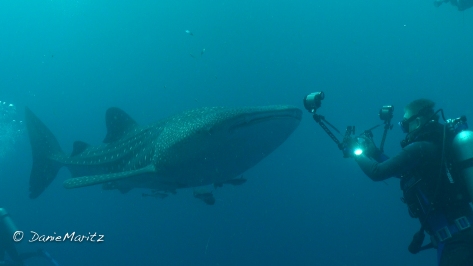
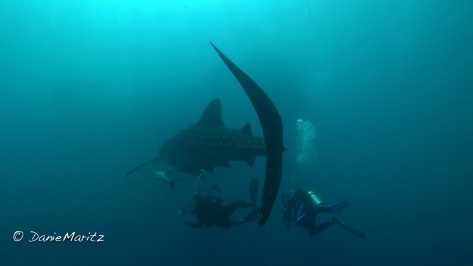
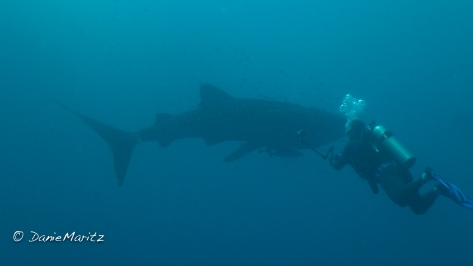
The whale sharks are inquisitive. When they are swimming in your direction and you notice them tilting their bodies to your side, to get a better look at you with the one eye, you can be sure that they will then swim directly towards you.
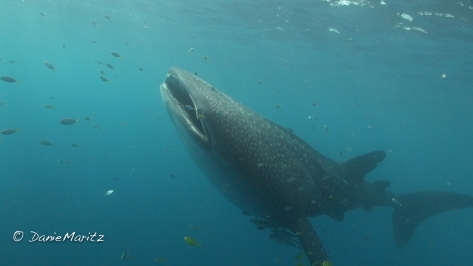
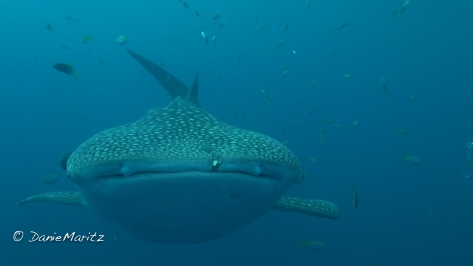
Whale sharks are ovoviviparous which means that the young hatch from eggs retained within the mother, so that she then gives birth to live young.
Whale shark pups are about 2 feet long when they are born. They only reach sexual maturity when they reach a length of about 9metres. This means that the whale sharks can only start reproduction at a maturity age of about 30 years. So their very existence is in danger, even-though is thought that whale sharks may live at least 100-150 years.
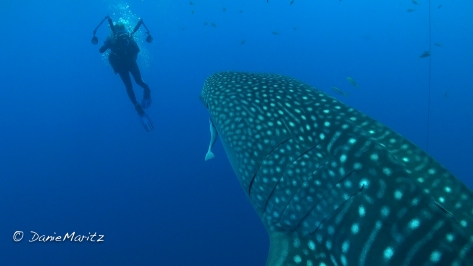 We found that when there were a couple of scuba divers in the water, the whale shark would approach and would swim past each and every one of us in turn. All you have to do is to is to stay in on place, they will find you.
We found that when there were a couple of scuba divers in the water, the whale shark would approach and would swim past each and every one of us in turn. All you have to do is to is to stay in on place, they will find you.
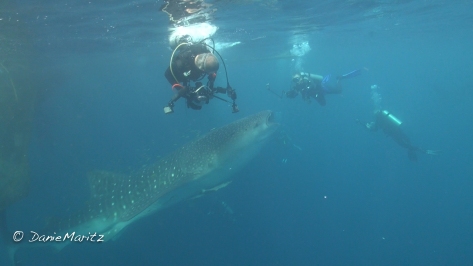
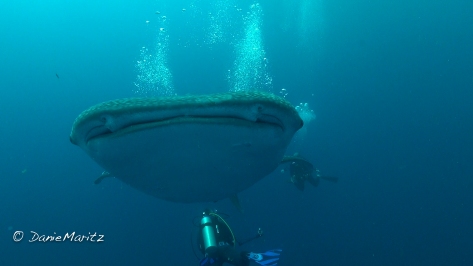
Whale sharks seem to like the bubbles coming from the scuba divers and like to swim through the bubbles, almost like mantas do, maybe the bubbles do tickle their skins.
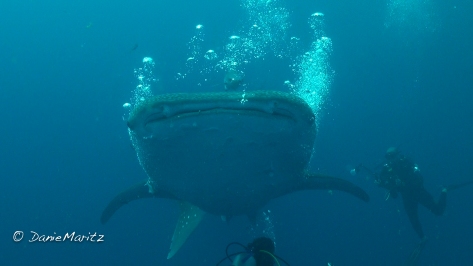 In Cenderawasih the whale sharks don’t just pass by seasonally, like in most other places where most dive operators will drop you, on snorkel, in the path of a single shark so that you can get a glimpse of it for 5 minutes, if you have a long breath and can swim very fast.
In Cenderawasih the whale sharks don’t just pass by seasonally, like in most other places where most dive operators will drop you, on snorkel, in the path of a single shark so that you can get a glimpse of it for 5 minutes, if you have a long breath and can swim very fast.
The Cenderawasih whale sharks stay year-round, they circle under the fishermen platforms called “bagans“, sucking some fish out of their storage nets.
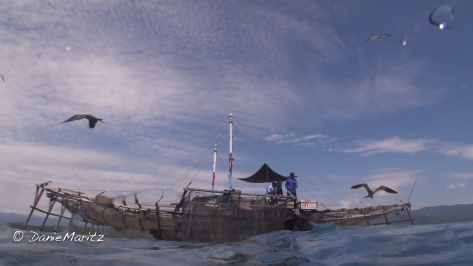
They love the bubbles. The whales harks of Cenderawasih Bay swim into the bubbles on purpose, they appear to like the feeling, they will even try to ‘gulp’ the bubbles with their mouths.
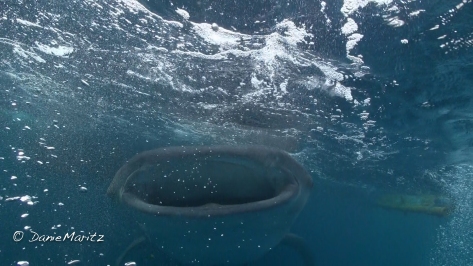
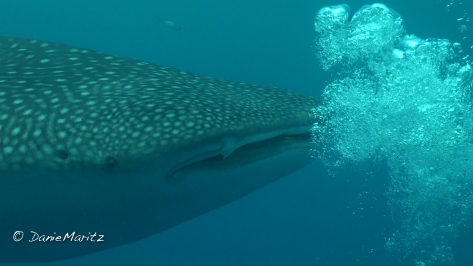
Whale sharks are quite curious and will swim up to you, tilt their head towards you and have a good look at you.

It takes some effort to get to Cenderawasih, but, it’s well worth the effort. The trip was organized by Matt Weiss of DPG. The owners of the MSY Seahorse, Txus, (from Spain who also built the boat) and Chi Chi (from Indonesia) our lovely, sparkling, cruise director, were both on board as well. They were Great hosts as well as excellent dive guides.
It was a trip that I can easily recommend to anyone.
